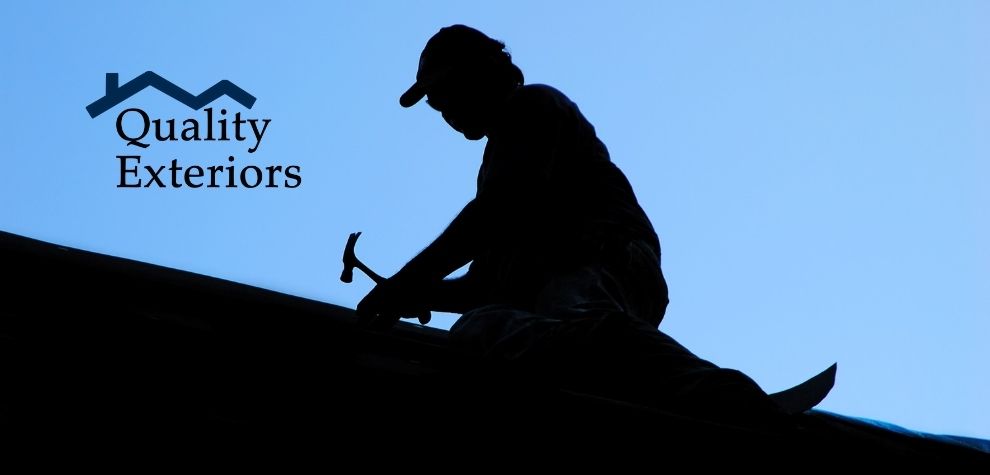If you are considering getting a new roof for your house or building, you might have come across the terms TPO and EPDM. Wondering what’s right for your building, TPO vs EPDM? In this blog, the roofing installation and replacement experts at QEI walk you through the differences between them.
In contrast with residential roofing, commercial roofing generally involves flat roofing systems. This is because they cover a much larger area than residential roofs do. Although some types of shingle roofing systems are common for residential roofs, we do not advise commercial roofing systems to use shingles. If shingles are installed on a flat roof, water can get trapped under the shingles. This is even if they’re properly installed. When this happens, the water remains in place and weakens the shingles. In turn, the water also weakens the roof itself. Most flat roofs can stay leak-free for around seven years.
Many cities place restrictions on roofing pitches. The pitch of a flat roof must be structurally existing, or might require construction of a specifically designed taper system. A great option is a thermoplastic polyolefin (TPO roof system), or an ethylene propylene diene monomer (EPDM) system, which consists of synthetic rubber. Which one is right for you?
What is a TPO roof system?
EPDM roofing systems have been an industry leader for over 50 years in terms of single-ply roofing. However, TPO is rapidly gaining popularity. TPO is poised to become the industry favorite in the near future. TPO offers many advantages, most notably energy efficiency. This makes it popular with commercial roofing projects. EPDM has a dark surface. During the summer, it absorbs heat and in turn makes cooling systems work harder. TPO roofing reflects sunlight. This allows commercial air conditioners to work at maximum efficiency.
TPO is more resistant to punctures than EPDM. It provides up to three times more protection from punctures. This means that when it gets very rainy, the roof will protect against leaks. TPO roofing systems are put in place with welding. This makes the system very durable. This does, however, complicate the installation process. Welding requires an electrical source. For this same reason, if you need repairs in the future, the process will be a bit more difficult.
The membrane of a TPO roofing system is composed of three layers:
- TPO Polymer Base
- Thermoplastic Polyolefin Compounded Top Ply
- Polyester-Reinforced Fabric Center (Scrim)
Installing TPO is cost efficient. The membrane can be fastened or attached directly to the roof deck and welded together at the seams. This provides a water-tight connection.
What is an EPDM roof system?
If your building is located in an area that receives a significant amount of hail storms, your best option will probably be EPDM. It is made of synthetic rubber. This causes the hail to bounce off with almost no damage to the roof surface or system. TPO is made of thermoplastic. When it is struck by hail, the hailstones produce gashes in concentric circles that remain in place. In the future, this could compromise the membrane of the roofing system.
It’s somewhat easier to repair EPDM roofing systems. This is because you don’t need an electrical source for welding, like required in TPO system repairs. If you have solar panels, or are considering them in the future, EPDM would be the better choice for you. It won’t interfere with light absorption. TPO systems reflect sunlight onto the solar panels. This might cause them to fail. EPDM comes in a variety of different thicknesses.
TPO vs. EPDM: is one material better than the other?
It depends on the project. One is not necessarily better than the other. Some materials are a better choice for your building and the type of activities that happen inside. If you’re in the market for single-ply membranes, we will help you determine if TPO, EPDM, or even PVC will be your best choice depending on budgetary and other factors.
TPO vs EPDM comparison chart
| TPO | EPDM | |
| Cost | $1.50-$5 per square foot | $.75-4.50 per square foot |
| Duration | 15-20 years | 25-30 years |
| Sunlight | Reflects sunlight | Retains sunlight and heat |
| Attachment | Adhered with chemicals | Fastened mechanically |
| Color options | Tan, white, gray, others | Black or white |
| Fusion | Hot air gun fuses the seams | Seam tape fuses the seams |
| Around since | 1986 | 1962 |
Shreveport Bossier Roofing Experts
If you’re still undecided on whether to install TPO vs EPDM, give us a call to find out more! We will be happy to provide you with an expert recommendation on the best roofing system for your circumstances. Choosing one over the other depends on your geographic location. We will need to take into account the heat, hail, and rain. If you have solar panels on your roof, this could also affect your decision. If you already have a flat commercial roof that needs to be fixed, QEI offers flat roof repair in Bossier City and Shreveport.
The QEI Roofing Contractors in Bossier City offer premier roofing solutions in Northwest Louisiana. Feel free to contact us for a free inspection of your home or business online or by calling us at 318-747-1254.
We also provide the following:


